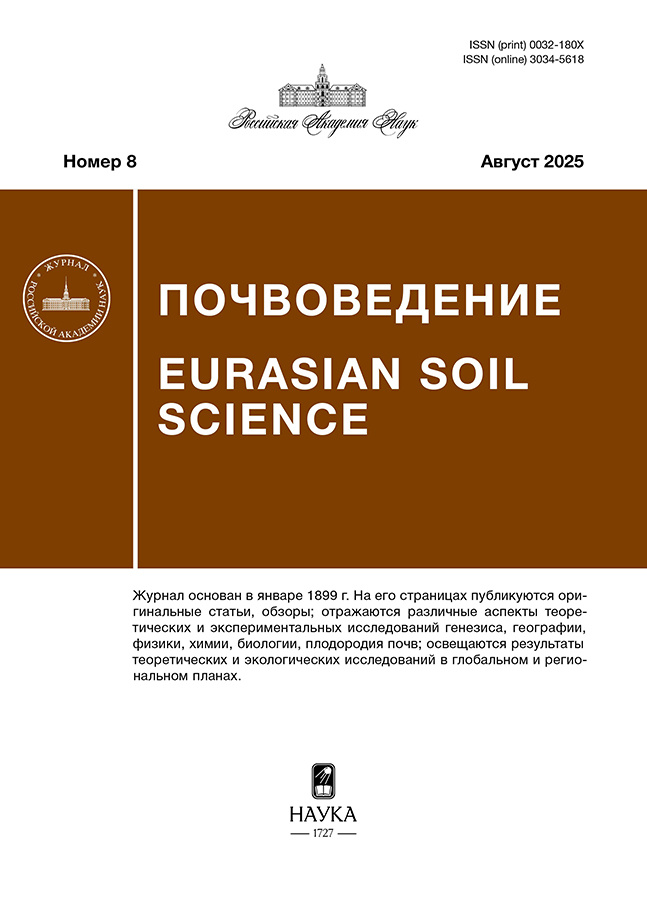The experience of large-scale modelling of soil erosion over the entire period of agricultutral use of a small catchment in the Tula region
- Authors: Ivanova N.N.1, Krasnov S.F.1, Ivanov M.M.1,2
-
Affiliations:
- Lomonosov Moscow State University
- Institute of Geography of the Russian Academy of Sciences
- Issue: No 8 (2025)
- Pages: 1083–1100
- Section: DEGRADATION, REHABILITATION, AND CONSERVATION OF SOILS
- URL: https://journals.eco-vector.com/0032-180X/article/view/688200
- DOI: https://doi.org/10.31857/S0032180X25080078
- EDN: https://elibrary.ru/INYGLQ
- ID: 688200
Cite item
Abstract
For a small catchment area in Tula region, a quantitative assessment of soil layers and volumes of soil erosion over the entire period of agricultural use was conducted. The assessment was based on the distribution of leached Chernozems (Luvic Chernic Phaeozems) and Podzols (Luvic Greyzemic Chernic Phaeozems). The total soil loss was determined by comparing the thickness of humified soil horizons on plowed slopes with those on nearby flat watersheds. The washout layer was calculated using the SERSAL model, developed at the Department of Soil Erosion and Riverbed Processes, Faculty of Geography, Lomonosov Moscow State University, based on the adapted and modified USLE natural setting of Central Russia. Based on archival and literary data, we have reconstructed changes in the spatial position of arable land boundaries, farming systems, crop composition, and other erosion factors over the course of three and a half centuries of agricultural development in the watershed. The obtained values were used as input parameters for the model. A comparison of the simulated results and actual soil losses on plowed slopes showed good agreement. When calculating with the Cell variant of the SERSAL model, using an indelible soil standard of 85 cm to determine total soil losses at well points, the simulated volume of washout was 1.2% lower than the actual losses. This confirms the importance of quantifying the contribution of mechanical erosion to total soil loss on arable slopes.. It has been revealed that it is important to take into account changes in the micro-relief of arable land during the study period due to erosion-accumulation processes and mechanical erosion.
Full Text
About the authors
N. N. Ivanova
Lomonosov Moscow State University
Author for correspondence.
Email: nadine_iv@mail.ru
ORCID iD: 0000-0002-9190-4392
Russian Federation, Moscow
S. F. Krasnov
Lomonosov Moscow State University
Email: nadine_iv@mail.ru
Russian Federation, Moscow
M. M. Ivanov
Lomonosov Moscow State University; Institute of Geography of the Russian Academy of Sciences
Email: nadine_iv@mail.ru
Russian Federation, Moscow; Moscow
References
Supplementary files












